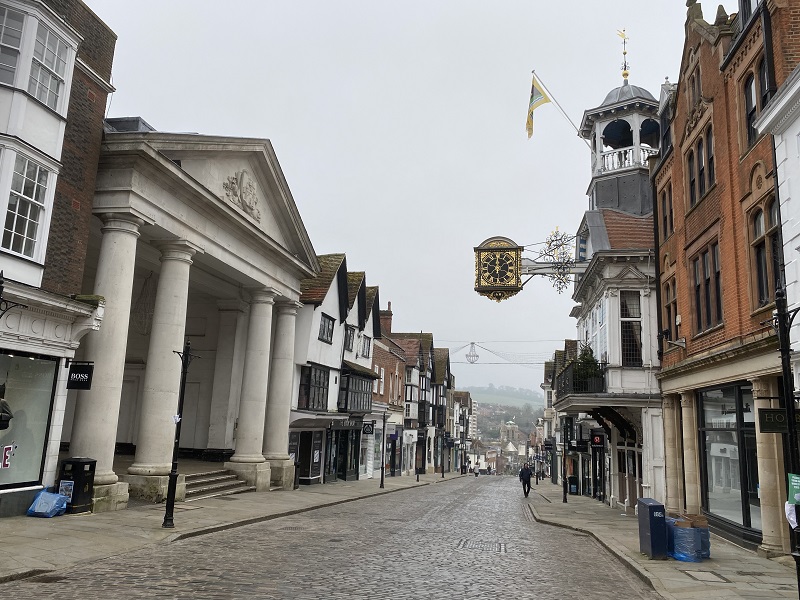Famous Guildfordians Dennis Brothers Lewis Carroll George Abbot Alan Turing Previous Next Many famous people have been associated with Guildford. Medieval kings stayed here. Samuel Pepys visited here. But to be a famous Guildfordian a person must surely have been born here, or at least lived here or perhaps had a major impact on the…
Author: admin

Welcome to Guildford
Welcome to Guildford Explore Town Centre Walk along River Wey Discover Surrey Hills Cathedral and University Previous Next Guildford is the county town of Surrey. It boasts a beautiful High Street with views of the North Downs and is one of best places in the South East for shopping. Situated only 30 miles from London,…

Explore Town Centre
Explore Town Centre The cobbled street with the imposing Guildhall clock is the image of Guildford that most people recognise and the feature most visitors comment upon. The street is truly unique with several fine buildings lining the roadway. Angel Hotel Coaching Inn with early 19th c. stucco front but with 17th century interiors and…

Walk along River Wey
Guildford owes its origins to the River Wey which cuts through the North Downs. In the 17th century it was transformed into the Wey Navigation and today it is a haven for wildlife, walkers and pleasure boats.

Discover Surrey Hills
Guildford is surrounded by the beautiful rolling Surrey Hills. In fact it was the importance of this spot where the river Wey cut through the hills that gave birth to Guildford. They survived largely due to a lack of natural resources that fueled the industrial revolution in other parts of the country. Today this area…

Angel Hotel
Coaching Inn with early 19th c. stucco front but with 17th century interiors and a 13th century crypt (probably a wine store). Now Guildford’s oldest hotel, this is the last remaining coaching house in the town. Others were the Red Lion and White Hart. It was once one of several serving the coaches running from…

Cathedral and University
The cathedral was consecrated in 1961 but its origins go back to the reign of Henry VIII. In 1534 Guildford was made a suffragan bishopric to assist Winchester. Population increase in the 19th and early 20th c. made it necessary to create an independent See in 1927 using Holy Trinity as a pro-cathedral. The cathedral…

St Mary’s Church (10thc.)
Saxon church, 10th c. on the site of earliest settlement in Guildford. The flint tower has been dated to the late 10th century on stylistic grounds and a local legend says people used it to watch the Norman invaders burn nearby Shalford in 1066. Most of the church was rebuilt in c1180 in the transitional…

Holy Trinity Church (1749-63)
Surrey’s only large 18th century church, it has fine brickwork as is a perfectly proportioned example of the Palladian style. It is built on the site of a medieval church which was destroyed when the tower suddenly collapsed during alterations to remove the columns in the church. Some monunments were transfered, among them the tomb…

Abbots Hospital (1619-22)
Almshouse (or hospital) built by George Abbot, local boy and Archbishop of Canterbury for twelve men and eight women. At the time of its construction Abbot would have been rubbing shoulders with King James I and the future Charles I. Inigo Jones was introducing the Palladian style to England at the Queens House in Greenwich…